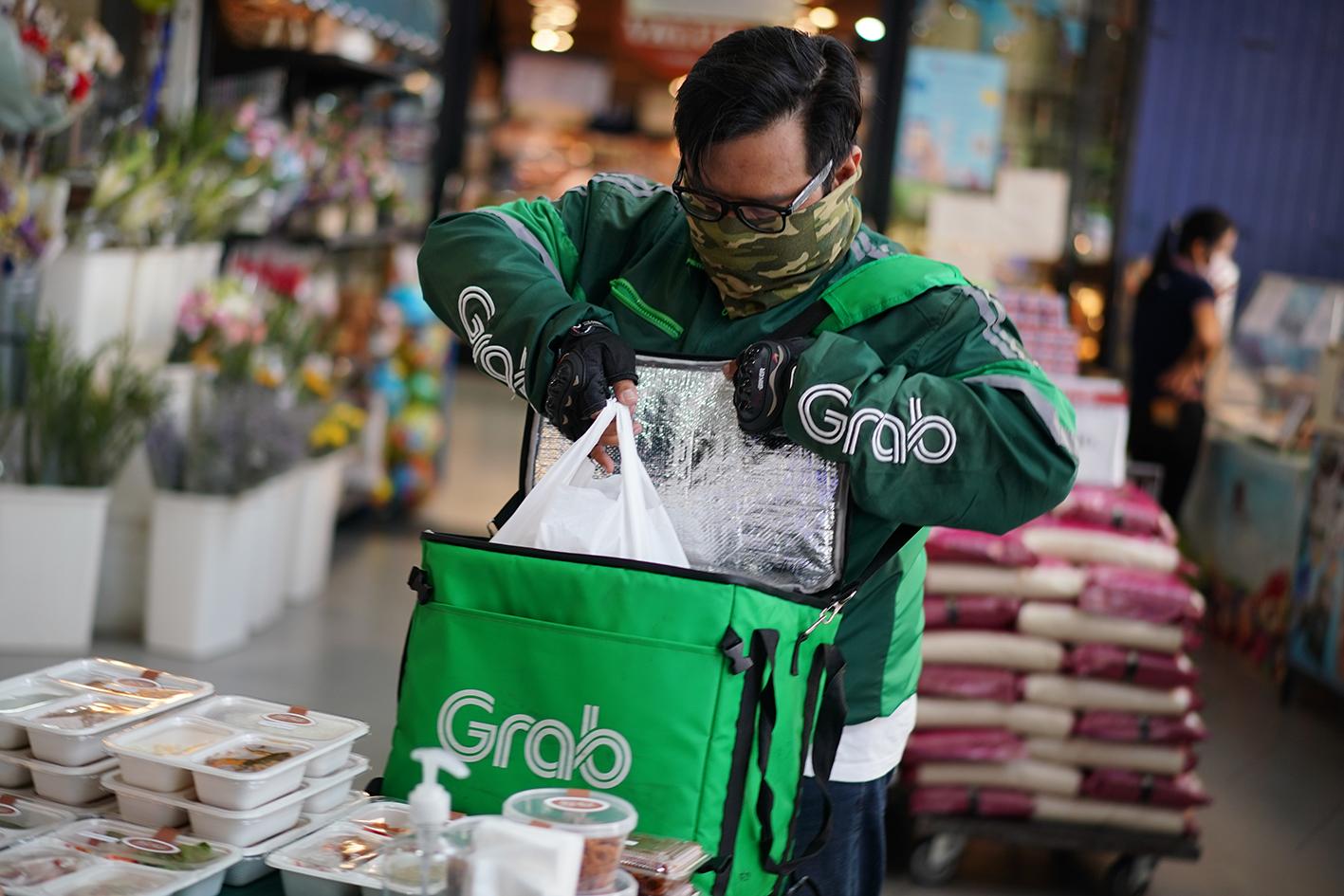
Grab commands 50% of the market share among online food delivery apps in terms of gross merchandise value (GMV), followed by Foodpanda at 23% and Lineman 20%, according to the consultancy Momentum Works (MW).
While food delivery platforms do not report their internal numbers for GMV or revenue, the report by MW offers evidence of Grab's domination of food delivery in Thailand.
However, the report does not include data from delivery apps not created by tech startups such as Minor Group's 1112 delivery app that offers deliveries from chain restaurants like Pizza Company and Burger King or the McDonald's proprietary delivery app.
The report also estimated the total GMV of online food deliveries grew 183% in Southeast Asia in 2020, from US$4.2 billion to $11.9 billion.
Thailand was the second largest food delivery market in Southeast Asia with $2.8 billion GMV, behind Indonesia at $3.7 billion and followed by Singapore at $2.4 billion.
However, Singapore had by far the highest per capita spending with a population of only 5.7 million, which means it has 2% the population of Indonesia but 65% of its GMV.
Grab contributed close to half of the region's food delivery GMV at an estimated $5.9 billion and led the market in five out of six Southeast Asian countries in 2020 -- all except Vietnam, where local player Now has a marginal lead.
The report also found that Foodpanda typically had the lowest prices according to consumer feedback, while Grab led in terms of selection and reliability.
Economic growth, urbanisation and smartphone penetration were the biggest factors in growth in the market over the years, while the pandemic clearly spurred the triple-digit growth in 2020.
MW chief executive Jianggan Li says the Covid-19 lockdowns also caused operational strain for these firms that relied heavily on office lunch orders. Employees working from home made individual orders with smaller basket sizes to less centralised locations, meaning less profits for restaurants and the delivery apps.
"We have all heard news about the protests by riders and restaurants complaining about high commission rates, and this was likely due to the shift in density between the office lunch crowd and employees working from home," Mr Li said.
"This created both operational and PR strains on these delivery platforms, but we believe these issues were temporary and eased with the lockdowns and the increases in dine-in customers."
Despite the massive windfalls following the pandemic and lockdowns that forced many consumers to rely on delivery apps, many of these apps still have not achieved profitability.
MW suggests these companies do not follow US and European food app business models, but look to the Chinese app Meituan that has posted profits since the second quarter of 2020.
Meituan's "superapp" model allowed it to keep customer acquisition costs low by driving customers to food delivery through other services it offered.
"Meituan has about 65% of the market share and has even beaten Alibaba in the food market when they tried to compete through acquisitions," he said.
"Meituan is a ride-sharing company and is launching its own power bank-sharing services and plans to acquire food review services to find ways to acquire customers at low costs."